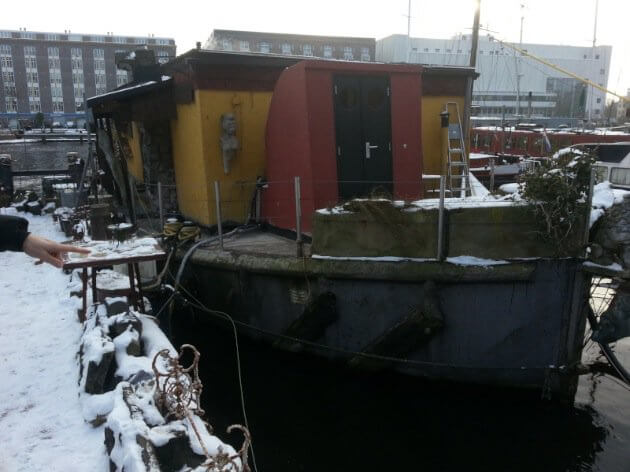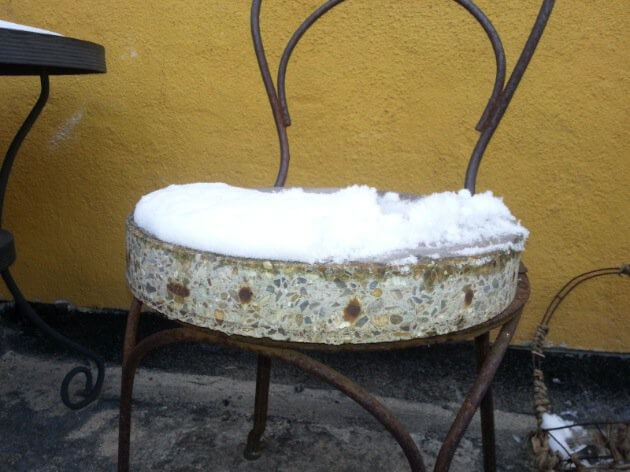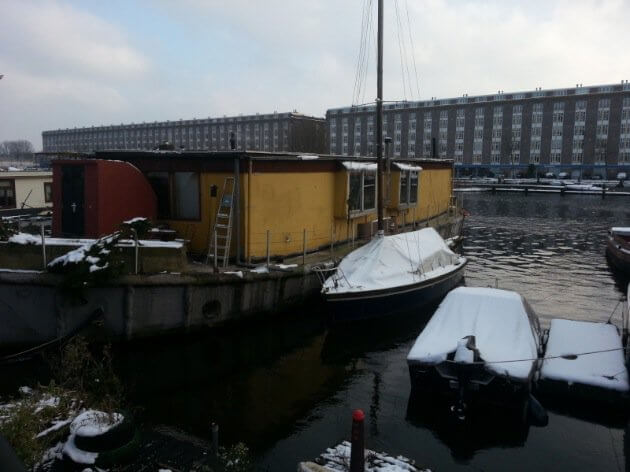WWII Concrete Barge Houseboat Renovation #1:
Don't think too much...
The most important thing when starting such a project is not to think too much about it. But make sure to think enough to make it the perfect houseboat, a home you never want to leave again. Now that we’re half way the complete make-over of your Amsterdam based concrete barge, built during the second world war in 1943, we decided to share our adventures with other houseboat fans all over the world.
By Juul Steyn
In this first episode we’ll have a brief look at the history and characteristics of the houseboat. The ship was most likely built in 1943 and after it did it's job after D-Day it was first reported in Amsterdam in 1953. No-one knows how the barge found it's way to the Dutch capital.
You will probably agree that it’s not the most elegant piece of work in the world: 27 meters of concrete, almost 7 meters wide and with a whopping weight of 200.000 kilograms it’s not the prettiest girl in town. Not to mention the yellow shoebox on top of the barge. It’s actually the ugly duckling along our quay in the Eastern Docks of Amsterdam. But as the story goes: the ugly duckling eventually becomes a beautiful swan. And that’s exactly our goal: renovate the boat rigorously and create a marvellous floating castle.

Above: the massive concrete barge was never intended to be used as a houseboat, yet we're planning to make it 'the perfect houseboat'. Quite a challenge!
Why a concrete ship?
Good question. The answer is pretty simple: in the second world war all the steel in the UK was needed to produce enormous amounts of ammunition, tanks, airplanes and ships in order to defeat the Germans. Steel was too scarce to use for simple freight ships, so concrete was a cheap and reliable alternative. Little is known about this type of barge, but on the website http://concretebarge.co.uk/frames/index.htm you can find an interesting amount of evidence that these vessels were used in WWII. These concrete barges were used to transport ammunition, tanks, fuel and all other supplies that were needed to keep the allied war machine going.

Above: cross section of the concrete wall, only 55 mm thick.
Live in a diesel tank
Our boat was very likely used to transport diesel from England to France after D-day. After taking away all the timber work on the inside of the hull we found a layer of black coating of bitumen and the fact that no large hatch for larger freight was found in the boat shows that only liquids were transported with this boat. And you could still smell the heavy diesel stench, not in the least because of the very poor ventilation of the boat. A long story short: there was a pile of work to be done before the lower floor of our boat could meet our expectations of ‘our floating dream house’. How to turn a floating diesel tank into the perfect houseboat...

Above: Side view of the concrete barge with the current yellow top, probably built in 1953.
In the next episode we’ll take a closer look to the first demolition work and how to deal with toxic coatings in your houseboat.
Episode #2: WWII Concrete Barge Houseboat Renovation #2
